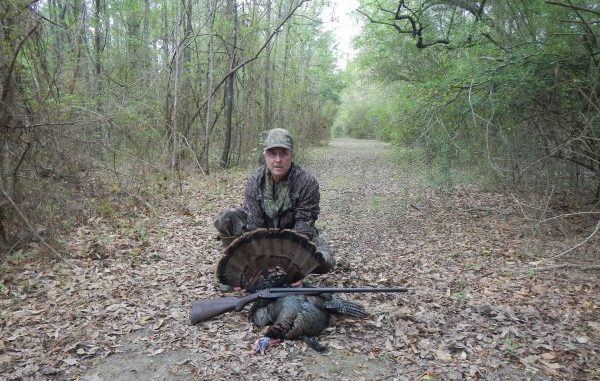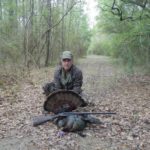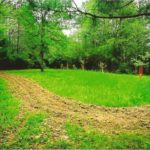
It’s all about having the habitat to hold birds
The theme this year for the National Wild Turkey Federation is “Save the Habitat, Save the Hunt.” This is also the theme for the Federation’s new initiative that has set three goals or objectives: conserve and enhance 4 million acres of critical upland wildlife habitat, recruit 1.5 million new hunters, and open access to 500,000 new acres for hunting and other outdoor recreation.
If you are not a member of NWTF, you should be — especially if you are a turkey hunter. If the hunting heritage is to continue as we know it, we all need to give back in whatever way we can.
Turkey hunting is all about having turkeys to hunt. Having turkeys to hunt is all about having turkey habitat; that is the plain and simple truth.
Turkeys respond to habitat management that enhances what they need to survive and thrive: food; habitat for nesting, brood rearing, roosting and escape from predators; and water.
The habitat requirements for turkeys changes during the different seasons. During the fall and winter, the primary needs are for food and roosting. In the spring and summer, turkeys move into those areas that provide habitat for nesting and brood-rearing. In the fall and winter, the main foods of turkeys are the hard- and soft-mast fruits along with the seeds produced by the various grasses and herbaceous plants.
In the spring and summer, turkeys are eating a lot of green material in the fields, along with the insects and other critters they scratch up, and the poults depend upon the insects to get them started in life.
If you are a deer hunter, you might notice this food shift as the turkeys move from the fields in late fall to the hardwood drains where the acorns are.
When it comes to wild turkey habitat, diversity is the key. Maintaining a diverse habitat that includes hardwood trees, both the hard- and soft-mast species, pine timber along with fields and other openings will greatly enhance the turkey habitat. A solid stand of pine plantation timber will not hold turkeys year round.
Turkeys are very mobile birds, and can cover a lot of ground in one day. My philosophy for turkey habitat management on our small tracts is to have year-round sites where turkeys can come and feed anytime they want to
If you have what they need and want, they will come.
When I plant our food plots, I use a strip-planting technique. Strips are planted for spring and summer, and left in the fall and winter. In the fall, strips are planted with the fall and winter plants, and left through early spring and even through late summer, depending on how much rainfall we get that will keep the clover thriving until it gets really hot, usually August and September.
In February, prior to the turkey season, I cut and plow these old spring and summer strips, which provides a site for turkeys to come feed and scratch around in during the spring turkey season. The turkeys will also utilize the clover and winter grass strips, especially when the winter grasses start producing seed. These winter strips can also provide nesting habitat for hens.
Prior to the time hens should be finishing up with nesting and the young turkeys begin hatching, I cut some strips to provide feeding sites for the young turkeys. Insects are their primary food, and it is essential for their survival to have good feeding sites for the poults. If they do not grow and survive, turkey hunting will likewise take a nose dive.
As I said: Turkey hunting is all about having turkeys to hunt, and by doing the habitat work there should be turkeys to hunt.
LDWF biologists conduct poult surveys in the summer to determine turkey production for that year. Production has been good in the northwest region of the state for many years, and if you look at the statewide harvest it is apparent that, indeed, there are turkeys to hunt in that part of the state.
Vernon Parish has the highest turkey kill. It should be noted that this poult-production index does not necessarily correspond to the turkey harvest the following year.
Poult production has been down in Southeast Louisiana for the past few years, and was down again for 2013. However, in the Clinton area our turkey hunting was excellent the past few seasons.
I participate in the poult survey and put out trail cameras at various locations to photograph turkeys, as well as make surveys around the property looking for turkeys. It certainly did not look like much production; I saw a couple of hens with two poults and a hen with a single young poult.
However, during this past deer season, I was sitting in my turkey box and had a group of six turkeys come out and start eating clover and grass. At first it looked like all hens. The adult hen separated from the others, and as I started glassing the other five I was pleased to see that four of them were jakes with one hen.
So it appears that production was not as bad as the index shows — at least on this small tract. I have to credit this to the work that we are doing to make this property productive for turkeys, especially providing feeding habitat for them year-round.
If you are considering planting plots for turkeys, there are many plant forages from which to choose. For fall and winter, I plant a variety of clovers and winter grasses, such as wheat and oats. I usually have Timothy grass and rye grass that regenerate to some degree every fall in the patches, and the turkeys will use these.
The spring and summer the plantings consist of sorghum, millet, sunflowers, partridge pea and other plants in the composite family. Bush-hogging during various times will keep the native grasses and native plants growing, and provide different levels of vegetation that will hold different species of insects.
As far as the hunting goes, patience is the most-important tool I have in my hunting pack. Last season I killed my two adult toms the first week of the season. One was killed the third day of the season at 8 a.m.
The tom never gobbled at daylight; at least I never heard it. I was set up on my turkey strip, and had been calling off and on, with no luck; however, knowing that the turkeys had been regular visitors to this strip, usually every day, I had decided to just hold tight and wait.
Sure enough, without any announcing gobble the tom just strutted in and headed to the jake decoy to get rid of that rival.
The second hunt was similar to the first: no gobbling at all. I did have a jake and two hens come in around 9 a.m., and so I decided to just stick with it.
At noon a tom gobbled behind me and came in on the woods road, and my little Bayard 16 dropped it in its tracks.
Patience is indeed a virtue, desired by many but acquired by few.
However, having the habitat that turkeys like and knowing that they visit it everyday does make it a little easier to practice that patience.
I hope your season goes well, and remember to share with others.
The 2014 Turnip Day at Camp David is over and the Greater Baton Rouge Food Bank was happy to get the harvest. If you have never eaten a dish of turnips-potatoes-onions, you have been missing out on something good. Add a little southern-fried turkey to the meal, and it doesn’t get any better than that!
A little preparation and patience can make it happen.




